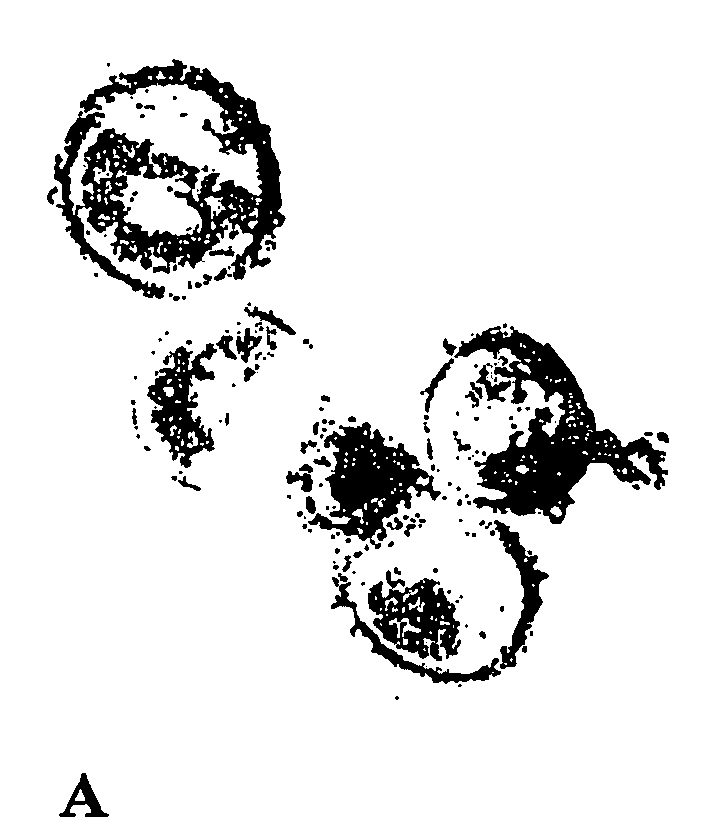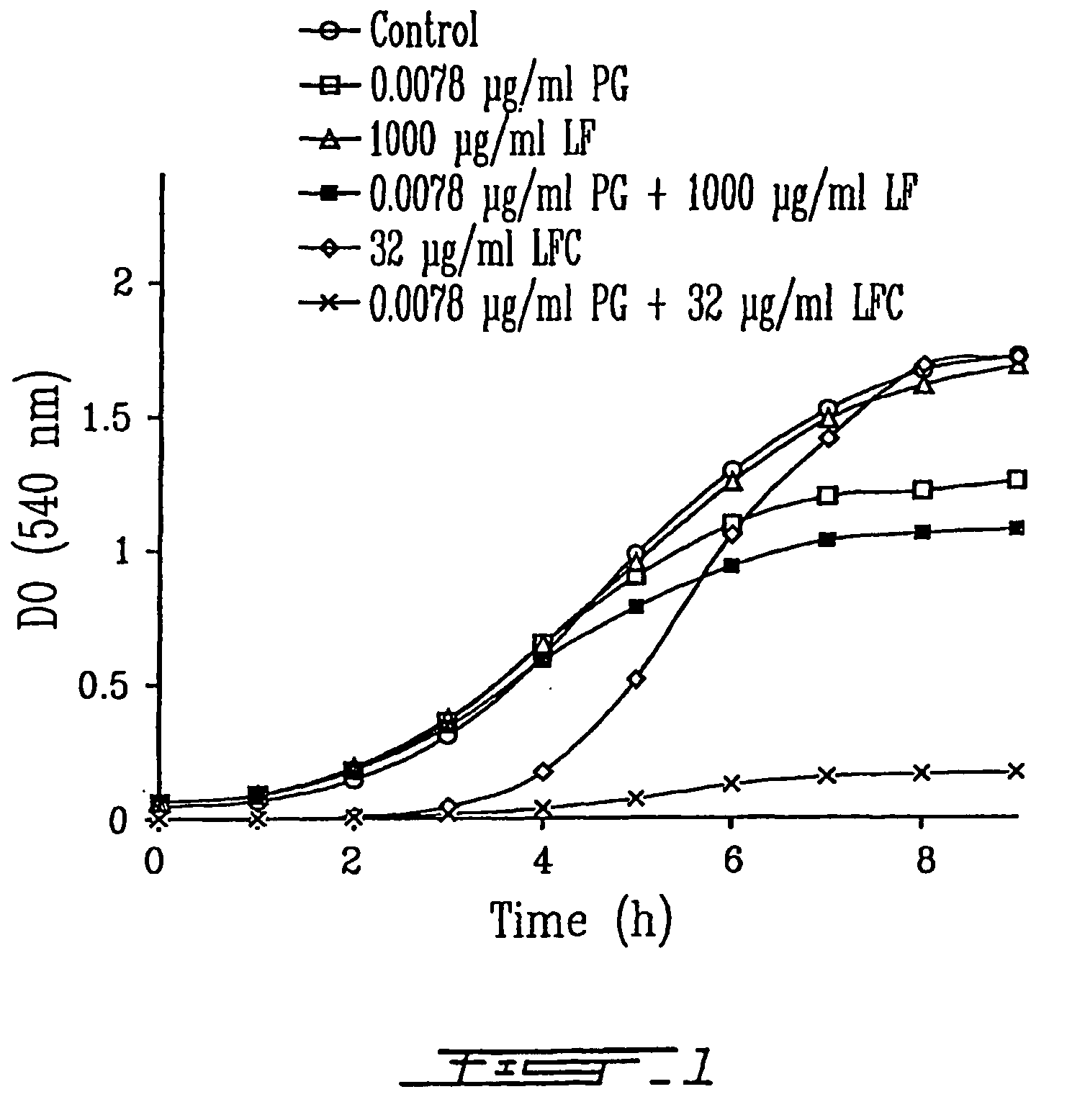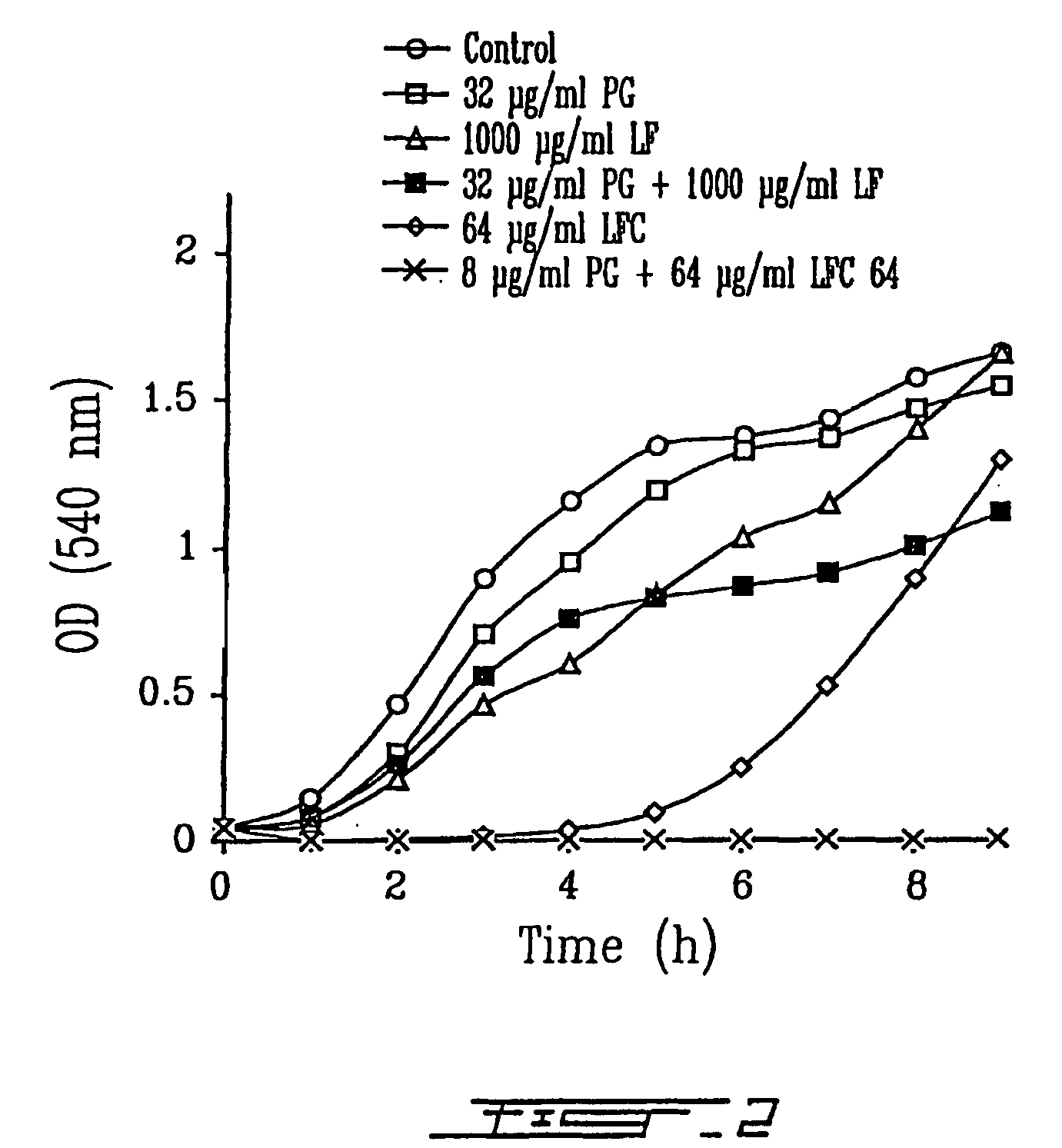Method and composition for treatment and/or prevention of antibiotic-resistant microorganism infections
a technology for antibiotic-resistant microorganisms and compositions, applied in the direction of antibacterial agents, drug compositions, peptide/protein ingredients, etc., can solve the problems of poor development or absence of policies regulating veterinary use of antibiotics, easy spread of infections, and heavy contamination of thawing liquid from all investigated poultry carcasses . to achieve the effect of reverse resistance of antibiotic-resistant microorganisms
- Summary
- Abstract
- Description
- Claims
- Application Information
AI Technical Summary
Benefits of technology
Problems solved by technology
Method used
Image
Examples
example i
Determination of the Minimal Inhibitory Concentration (MIC) of Antibiotics
Antimicrobial Agents
[0116]Bovine apo-lactoferrin, novobiocin (quinolone-like antibiotic) and the macrolide erythromycin were purchased from Sigma Chemicals (St-Louis, Mo.). Penicillin G, ampicillin, cefazolin and neomycin were purchased from Novopharm Limited (Toronto, ON, Canada). Bovine LF (Besnier, Calif. USA) was stored at −20° C. at a concentration of 100 mg / ml in water. Lactoferricin was isolated from bovine LF (Besnier, Calif. USA) according to the procedure described by Dionysius. and Milne (1997, J. Dairy Sci. 80:667-674)) and it was kept at −20° C. until use. The isolated peptide was sent at the Biotechnology Research Institute (Montreal, QC, Canada) for amino acids sequencing which confirmed that it was LFC. Antibiotics stocks were always freshly prepared and diluted to the desired concentration in Mueller Hinton agar plates (MHA) or broth (MHB). A panel of discs of antibiotics (Becton Dickinson Mic...
example ii
Effect of Bovine Lactoferrin / Lactoferricin and Antibiotics on Bacterial Growth
[0125]The effect of LF or LFC at concentration sub-MICs alone or in combination with sub-MICs of antibiotics on bacterial growth rate of S. aureus, E. coli and K. pneumoniae was determined by monitoring bacterial cultures in MHB with the O.D.600 nm or by the count of colony forming unit per ml (cfu / ml). A volume of 2.5 ml of overnight cultures in MHB adjusted to 0.5-1 McFarland standard in saline were used to inoculate a final volume of 25 ml of fresh MHB containing the desired concentration of tested compounds. All flasks were then incubated at 37° C. with agitation (200 rpm) for 9 h. Aliquots were removed every hour to determine the culture turbidity using the spectrophotometer Philips PU 8800 (Pye Unican Ltd, Cambridge, UK). The combined antibiotic effect on bacterial growth was also determined using concentrations of LF in the presence of different concentrations of antibiotics. Briefly, a volume of 3 ...
example iii
Effect of Bovine Lactoferrin / Lactoferricin and Antibiotics on Bacterial Cell Morphology
[0130]Bacterial cells were grown overnight on MHA or MHB containing sub-MICs of penicillin G with or without LF or LFC. Microorganisms were prepared for transmission electron microscopy by fixation with glutaraldehyde followed by ferritin labelling. This method allows good preservation of capsular material. Briefly, bacterial cells grown in the presence or absence of antibiotics were fixed in cacodylate buffer (0.1 M, pH 7.0) containing 5% (v / v) glutaraldehyde, for 2 h at 20° C. Fixed microorganims were suspended in cacodylate buffer and allowed to react with the polycationic ferritin (Sigma Chemicals, St-Louis, Mo; final concentration 1.0 mg / ml) for 30 min at 20° C. The reaction was slowed down by 10-fold dilution with buffer, and the microorganisms were centrifuged and washed three times in cacodylate buffer. Bacterial cells were then immobilized in 4% (w / v) agar, washed 5 times in cacodylate bu...
PUM
| Property | Measurement | Unit |
|---|---|---|
| concentration | aaaaa | aaaaa |
| concentration | aaaaa | aaaaa |
| concentration | aaaaa | aaaaa |
Abstract
Description
Claims
Application Information
 Login to View More
Login to View More - R&D
- Intellectual Property
- Life Sciences
- Materials
- Tech Scout
- Unparalleled Data Quality
- Higher Quality Content
- 60% Fewer Hallucinations
Browse by: Latest US Patents, China's latest patents, Technical Efficacy Thesaurus, Application Domain, Technology Topic, Popular Technical Reports.
© 2025 PatSnap. All rights reserved.Legal|Privacy policy|Modern Slavery Act Transparency Statement|Sitemap|About US| Contact US: help@patsnap.com



